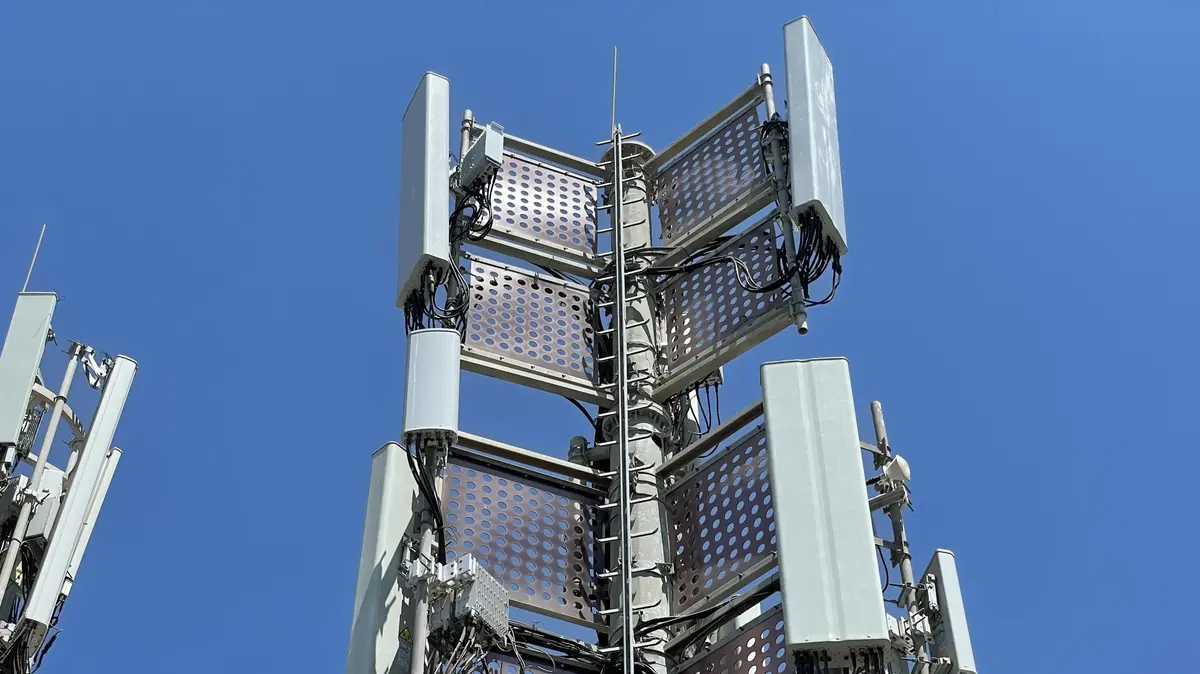These are sites under extreme surveillance.
Faced with the anti-5G protest from part of public opinion but also from certain elected officials, the State wants to oppose objective data and increased inspections of cell phone sites.
Objective: to verify that the exposure of the French to electromagnetic waves - the amount of energy that the body absorbs - complies with European standards for electric field strength established in 1999 and since subjected to numerous impact studies.
This mission falls to the teams of the National Frequency Agency (ANFR) supported, after a call for tenders, by private laboratories such as the Toulouse company Exem.
After more than 6,000 checks in 2020, the Agency was mandated by the State Secretariat for Digital Technology to increase checks, reach 10,000 annual tests, including at least 4,800 on relay antennas of operators offering 5G .
After installing their equipment, these companies provide the authorities with declarative information as close as possible to the required technical files.
Important reminder: any citizen can request a measurement of exposure to waves through an administrative process.
Morning essentials newsletter
A tour of the news to start the day
Subscribe to the newsletterAll newsletters
One value remains to be kept in mind: 61 V / m on frequencies from 2 to 300 Ghz, the threshold set by the European Union.
This sanitary standard has a large safety margin because it is 50 times below the threshold where the waves trigger a proven start of heating.
"The areas where the exposure levels can be dangerous are located in inaccessible places, it is more than unlikely in a place with the public", recalls Emmanuelle Conil, research engineer at the ANFR, during an unexpected check of a base station with 5G antennas in Boulogne-Billancourt.
In order to verify, ANFR agents, like independent service providers, use the same equipment and respect the same specifications to compare with common values.
First step of the check, make sure that the antenna is indeed producing a wave emission intended for a compatible smartphone.
These 5th generation mobile network antennas only activate when they are called upon.
You must start downloading a file of several MB to produce a ripple on the frequency bands around 3.5 Ghz where 5G is emitted in France.
This device shows the spectrum of frequencies including those used for the 5 at the end on the right./LP/DLC
A broad spectrum probe then captures the total exposure to the waves which are emitted within a radius limited to about 300 m.
"The antennas have a radiation pattern which gives a horizontal directivity and never towards the sky or the ground because that would give lost waves", specifies Alain Sibille, professor at Telecom Paris.
It is then necessary to rough up the different emissions to monitor 5G in particular.
Materialized by a large yellow ball, a powerful meter of electromagnetic fields therefore comes into action.
It displays an intensity of 1 V / m produced by the mini-antennas of this site, which has recently been operated in 5G by Orange and SFR.
The test confirms the regulatory values and the prior declarations of the operators.
Rare sanctions
In the event of an irregularity, or “atypical point” in the jargon and set at 6 V / m, the technician will observe in detail which operator and which cell of the antenna slightly exceed the threshold.
A radio telephone scanner also measures frequencies and is therefore capable of decoding the identifier of an operator who broadcasts on the band which has been assigned to it.
"There are rarely sanctions because, once notified, the operators quickly do work or reorient the antennas to avoid any bad publicity", assures Philippe Deleglise, technical manager of the ANFR laboratory.
As the antennas are calibrated and controlled by powerful algorithms, high exposure to waves is really an anomaly.
Even if 5G is still in its commercial infancy and logically low demand networks are not yet operating at full power.
"We have already carried out two test campaigns during operator experiments and we have never observed values greater than the maximums set by decree", reassures Emmanuelle Conil, of the ANFR.
The Agency and its service providers should not be idle to convince the most resistant that 5G does not generate more waves than previous mobile networks.
In a brochure sent at the beginning of January to elected officials, the Ministry of the Economy reminded them that “mayors, associations approved for the protection of the environment or approved as users of the health system and federations of family associations can request such measures free of charge at any time ”.
While waiting for the report from the National Health Security Agency (ANSES), scheduled for March, which will document the effects of 5G, possibly based on these recent exposure measurements posted online on the Cartoradio site.











/cloudfront-eu-central-1.images.arcpublishing.com/prisa/KMEYMJKESBAZBE4MRBAM4TGHIQ.jpg)



